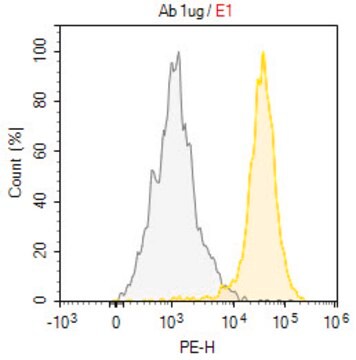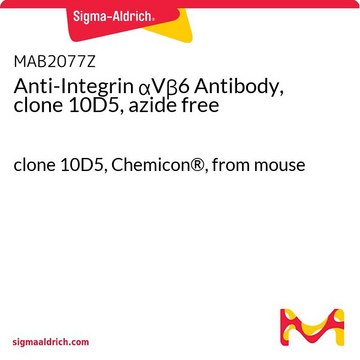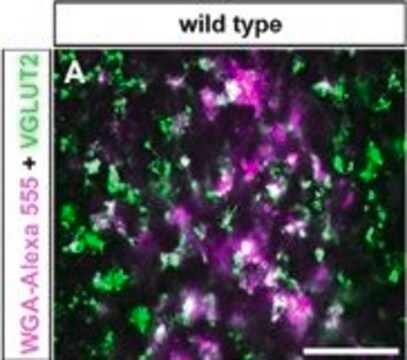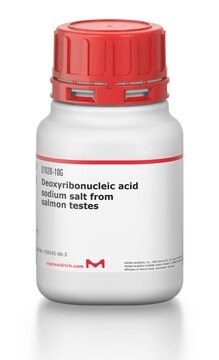MABF3125
Anti-Glucuronoxylomannan/GXM Antibody, clone 3E5
Sinónimos:
GXM
About This Item
Productos recomendados
biological source
mouse
Quality Level
antibody form
purified antibody
antibody product type
primary antibodies
clone
3E5, monoclonal
mol wt
observed mol wt ~N/A kDa
purified by
using protein G
species reactivity
fungi
packaging
antibody small pack of 100
technique(s)
ELISA: suitable
immunohistochemistry: suitable
neutralization: suitable
isotype
IgG1κ
epitope sequence
Unknown
Protein ID accession no.
UniProt accession no.
storage temp.
-10 to -25°C
Specificity
Immunogen
Application
Evaluated by Immunohistochemistry (Paraffin) in Cryptococcus neoformans infected Mouse lung tissue sections.
Immunohistochemistry (Paraffin) Analysis: A 1:50 dilution of this antibody detected glucuronoxylomannan/GXM in in Cryptococcus neoformans infected Mouse lung tissue sections.
Tested Applicatins
Neutralizing: A representative lot neutralized Gonoxylomannan/GXM and prevented toxicity in mice. (Lendvai, N., et al. (1999). J Infect Dis.180(3):791-801).
Immunohistochemistry Applications: A representative lot detected Glucuronoxylomannan/GXM in Immunohistochemistry applications (Feldmesser, M., et al. (1997). J Immunol. 158(2):790-9; Lendvai, N., et al. (1999). J Infect Dis. 180(3):791-801).
Fluorescence Activated Cell Sorting (FACS): A representative lot was used for sorting J774 and CHO cells labeled with this antibody in Fluorescence Activated Cell Sorting applications (Saylor Hawk, C., et al. (2019). J Immunol. 202(9):2782-2794).
ELISA Analysis: A representative lot detected Glucuronoxylomannan/GXM in ELISA applications (Janda, A., et al. (2015). J Biol Chem. 290(19):12090-100; Saylor Hawk, C., et al. (2019). J Immunol. 202(9):2782-2794).
Note: Actual optimal working dilutions must be determined by end user as specimens, and experimental conditions may vary with the end user.
Target description
Physical form
Reconstitution
Storage and Stability
Other Notes
Disclaimer
¿No encuentra el producto adecuado?
Pruebe nuestro Herramienta de selección de productos.
Storage Class
12 - Non Combustible Liquids
wgk_germany
WGK 2
flash_point_f
Not applicable
flash_point_c
Not applicable
Certificados de análisis (COA)
Busque Certificados de análisis (COA) introduciendo el número de lote del producto. Los números de lote se encuentran en la etiqueta del producto después de las palabras «Lot» o «Batch»
¿Ya tiene este producto?
Encuentre la documentación para los productos que ha comprado recientemente en la Biblioteca de documentos.
Nuestro equipo de científicos tiene experiencia en todas las áreas de investigación: Ciencias de la vida, Ciencia de los materiales, Síntesis química, Cromatografía, Analítica y muchas otras.
Póngase en contacto con el Servicio técnico







